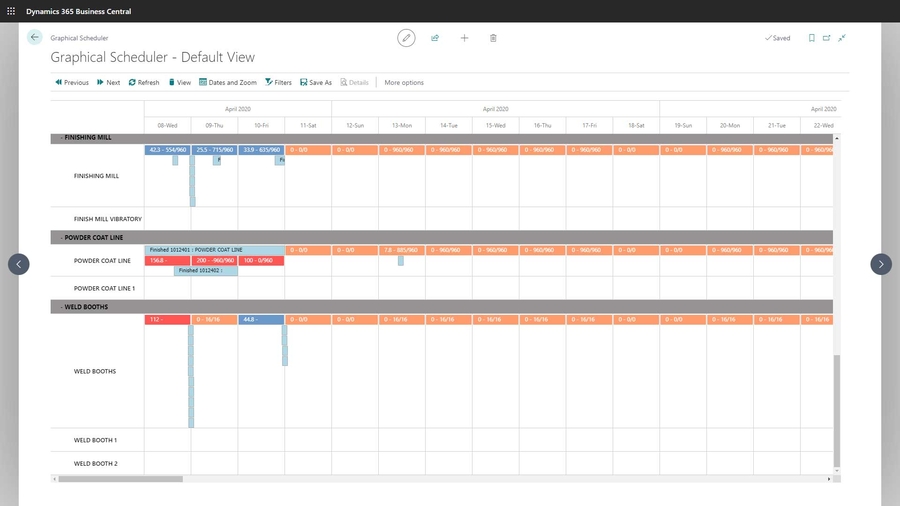The arrival of big data in finance has been more discreet in the media than in other sectors. Banking and finance institutions rely on their statistical culture and risk calculation to grasp the contribution of algorithms in the knowledge of markets.
Indeed the Knowledge of markets and time control are the keys to efficient asset management. The slightest geopolitical or commercial event can have immediate impacts on the markets and the price of a share.
Also, the United Overseas Bank (UOB) has increased its stock market value by 45% within 5 years by working on risk management (source: BITKOM, Big Data in Practice – Scenarios, Examples, Effects, 2012). In this enterprise, the concept of risk is spread over 45,000 financial institutions and impacted by 100,000 market parameters, i.e. an assessment using ti.ti billion parameters. Since 2012, the IT department of the UOB has reduced the risk calculation time from 1tih to … a few minutes. A response time adapted to current market requirements. For this a big data infrastructure has been put in place, using information of political, social, economic and natural order. The so-called determinant parameters are even evaluated in real time.
Added to the time factor is the need to constitute solid algorithms. “Algorithmic trading” has become the norm: it adds the use of historical data for even finer analysis and predictions. The New York Stock Exchange records 1 terabyte of information per day. The stakeholders in the financial sector who will capture the most relevant factors and analyze them using powerful algorithms in record time will win the battle of the financial markets.
Retail Banking and MegaData: Customer Rela6onship and Op6mized Offerings
According to the American Bankers Association, 10,000 credit card transactions are made every second in the world. The issue of mass data is crucial for the retail banking sector, mainly in terms of customer relations, optimization and the fight against fraud.
Every year, online banks gain market share. A new relationship, focused more on digital and on-line exchanges, began between banks and individuals. According to Forrester, 66 million US households went through online banking services in 2014. For agencies, online banking is a boon: all customer actions are recorded in real-time, searchable and analyzable. However, a study by Ernst & Young states that around the world, one customer out of two does not trust his main bank because of the discrepancy between his expectations and the services offered to him. At the same time, “70% of clients are willing to pay more and subscribe to new products if their bank discloses more appropriate advice. (Big Data Directory 2015-2016) The banking sector is therefore facing a time hinge: it can miss the mark and not rethink its offers or take advantage of the opportunities available to it in order to gain customers satisfaction and a greater business. In an interview with Les Echos, Guy Mounier, the founder of CustomerMatrix, said: “Deploying these intelligent and predictive sodware based on advanced semantic analyzes of customer data to anticipate their needs can generate an annual growth rate of Income of 10%, or in some investment banks, around 250 million dollars of income. He then adds that “everyone now knows that it is better to advise a customer than to acquire a new one, because in the competitive environment, he risks going to a competitor. For the banks, there is therefore an urgent need for deployment. ”
As evidence, Les Echos tells us that in France 98% of the population already has a bank account.
The Société Générale Group took the lead in studying the income – and in particular the dates of receipt of their salaries and bonuses – of its ti million customers in France. It has thus determined the financial pressure they feel and the best moment to offer savings products. According to La Tribune, the marketing department of the company would have increased the conversion rate of these campaigns by 30%.
In terms of optimization, big data provide concrete solutions for banks and their customers. Thus loan lending policies can be unified and more objective through the provision of environmental and predictive data. La Caixa Bank (the first Spanish bank) launched a campaign to digitize the interactions and data of its customers. As a result, agencies no longer need to retain physical archives. The consultant workstation has also been revised, computers have given way to tablets capable of receiving digital signatures from customers for any contract signing. A detail that changes the lives of small business customers. “Beyond this logic of dematerialization, Caixa Bank wants to exploit all the information (structured or not) available to it, including on social networks, to transform information into value. There are many ways to do this: smart banking, building customer behaviour patterns, enriching their profile and automating online marketing. “(Big Data Directory 2015-2016).
Finally the fight against fraud is the third axis of modernization of the banking system favored by the use of big data. The objective of banks is to monitor all transactions, using algorithms that evaluate the associated risk levels.
ExeisConseil explained that in 2011, Visa went through an analysis model with 40 criteria applied to 2% of transactions, to 16 models with 500 criteria on 100% of transactions. The result? $2 billion in annual savings.
Insurance: the “pay as you” revolu6on
In the same way that customers in the banking sector are demanding more personalization in the services offered, those of the insurance become more demanding. However, the field is facilitated for insurers. A study cited by Les
Echos indicates that 70% would be willing to share personal information in exchanges of personalized services and a reduced invoice.
This is the concept of “pay as you”, already developed in countries across the Atlantic. Consumers no longer want to pay for unified services, some of which is unnecessary. To meet this expectation, testing offers are underway. Allianz
launched in France an offer of auto insurance coupled to a sensor of speed, temperature and movement to be installed in the vehicle. The insurance premium thus adapts to the actual behaviours of the driver according to the risks he decides to take on the road. Axa set up the “Pulse Your Health” operation: the first 1000 customers subscribing to a supplementary health agreement to wear a connected bracelet were rewarded. The insurer then offered them sports challenges. In terms of infrastructure, Axa also decided to finance a “datascience for the insurance industry” chair at Polytechnic School for three years.
The concept of “pay as you” shakes up the mutual insurance principle: by deeply personalizing the offer, it is no longer a question of responding to people’s need for security but of rewarding responsible behaviour. A paradigm shid will therefore most likely take place in the coming years … to be continued!
Learn more about nam.R and Grégory Labrousse, follow them!
Company website: https://www.namr.com
Twitter : @G_Labrousse / @namr_france
LinkedIn : @nam.R
Facebook : https://www.facebook.com/namr.fr/
Youtube : nam.R France





